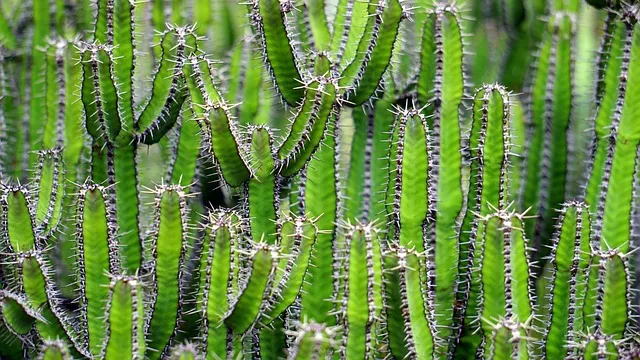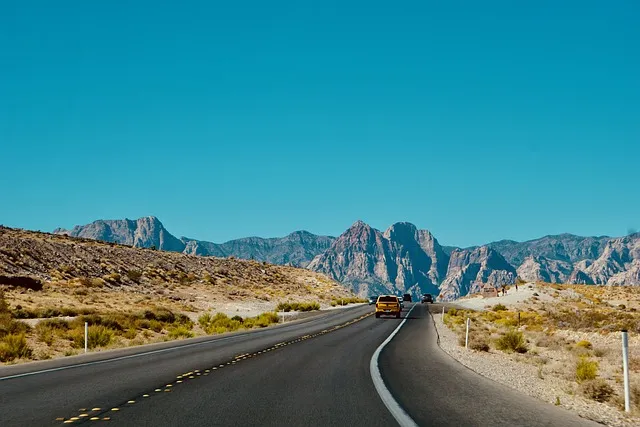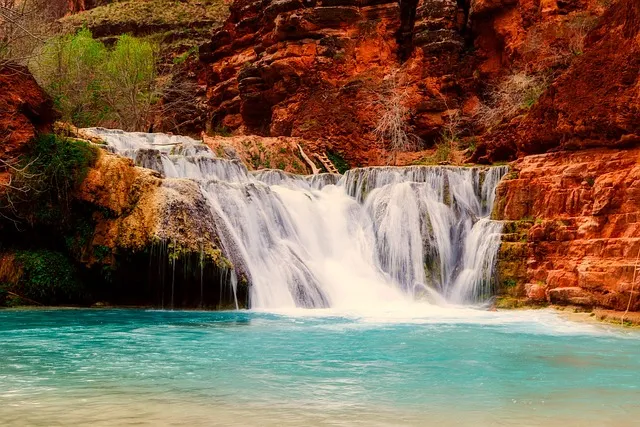The article explores the diversity and cultural significance of Arizona's desert ecosystems, focusing on the Sonoran and Chihuahuan Deserts. It highlights the resilient flora and fauna, such as the saguaro cactus, creosote bush, and desert bighorn sheep, that have adapted to survive in the harsh conditions of these deserts. The article also touches on the historical impact of indigenous peoples and settlers on Arizona's landscapes. It emphasizes the interconnection of geology, climate, and life forms, underscoring the importance of conservation.
Phoenix, Arizona's capital, is described as a vibrant urban center that blends modern progress with traditional Southwestern culture. It boasts a thriving arts scene, numerous cultural attractions, and a variety of culinary experiences reflecting its multicultural heritage. The article notes the presence of professional sports and prestigious educational institutions like Arizona State University in nearby cities.
Arizona's approach to environmental stewardship and urban development is highlighted as sustainable and forward-thinking, with initiatives that prioritize green spaces, eco-friendly infrastructure, and renewable energy sources. The state's efforts aim to preserve its natural landscapes while promoting urban growth, ensuring a harmonious balance between city life and conservation.
Arizona’s diverse tapestry encompasses both the untamed beauty of its desert landscapes and the vibrancy of its urban centers. This article explores the rich ecosystems of Arizona deserts, highlighting the Sonoran Desert’s distinctive flora and fauna. It delves into the pulse of Phoenix and its sprawling metropolitan area, revealing the cultural heartbeat through art, food, and heritage found in Arizona cities. Furthermore, it examines the delicate balance between preserving natural splendor and embracing modern development, offering insights into how these contrasting elements coexist harmoniously within the state’s boundaries. Join us as we traverse this eclectic mix of Arizona’s offerings, where each discovery promises a new perspective on its unique allure.
- Exploring the Diverse Ecosystems of Arizona Deserts
- The Flora and Fauna Unique to Sonoran Desert Environments
- Urban Centers: Phoenix and its Metropolitan Surroundings
- Cultural Mosaics: Art, Food, and Heritage in Arizona Cities
- Balancing Natural Beauty with Modern Development in Arizona
Exploring the Diverse Ecosystems of Arizona Deserts

The deserts of Arizona present a rich mosaic of ecosystems, each with its unique biodiversity and adaptations. Stretching across vast expanses, the Sonoran Desert, one of the most biologically diverse deserts in North America, showcases a spectrum of life forms. Here, the iconic saguaro cactus towers over a groundcover of creosote bush and prickly pear, while desert birds such as the greater roadrunner and Gila woodpecker navigate the rugged terrain. The Chihuahuan Desert in the southern part of the state offers a different glimpse into arid environments with its sparse vegetation and arid canyons. The organisms here exhibit remarkable resilience to the extreme conditions, from the creosote bush that sheds its water through openings in its leaves to minimize water loss, to the tarantulas with thick hairs that help regulate body temperature. These ecosystems are not just habitats for native species; they are also cultural landscapes steeped in the history of indigenous peoples and early settlers, whose interactions with these environments have shaped the region’s heritage. The interplay between geology, climate, and life forms in Arizona’s deserts creates a dynamic and ever-fascinating environment that is both preserved and revered by its inhabitants.
The Flora and Fauna Unique to Sonoran Desert Environments

Within the expansive Sonoran Desert, a unique tapestry of flora and fauna thrives amidst the arid conditions. The desert’s signature saguaro cacti, with their long, ribbed arms, stand as sentinels across the landscape, providing habitat for a myriad of species, including the Coachella fringe-toed lizard and the elusive desert bighorn sheep. These adaptable creatures have evolved to cope with the extreme temperatures and sparse rainfall characteristic of the region. The creosote bush and prickly pear cactus complement the saguaro, their roots tapping into deeper water reserves and their leaves offering sustenance to a variety of insects and small mammals. The Sonoran Desert’s biodiversity is further underscored by the presence of the Gila monster, an endangered species and one of the few venomous lizards in the world, and the serrano cactus, which boasts vibrant pink flowers. This delicate ecosystem, a mosaic of resilient life forms, is a testament to the desert’s ability to support complex systems despite its harsh environment. The nocturnal sounds of pack rats scurrying and the call of the greater roadrunner punctuate the quiet days, highlighting the dynamic nature of the Sonoran Desert’s ecosystem. The interplay between these plants and animals creates a resilient community uniquely adapted to the challenges of desert living, offering visitors a glimpse into a world both alien and fascinating.
Urban Centers: Phoenix and its Metropolitan Surroundings

Phoenix, the capital and most populous city in Arizona, stands as a testament to the state’s rich cultural tapestry woven within its urban expanse. The city’s metropolitan area, known for its diverse neighborhoods and bustling commercial districts, offers a blend of modern amenities with a nod to its Southwestern heritage. Phoenix’s central business district, affectionately known as “Downtown Phoenix,” is a hub of activity, featuring contemporary skyscrapers alongside historic adobe buildings. The area is a center for arts and culture, housing the Phoenix Art Museum, the Herberger Theater Center, and numerous galleries and performance venues that enliven the urban canvas with vibrant displays of creativity and talent. The nearby cities of Mesa, Scottsdale, Tempe, and Glendale, along with their suburbs, further expand the metropolitan area’s offerings, from professional sports to renowned educational institutions like Arizona State University. Together, these urban centers form a network that balances the tranquility of desert landscapes with the dynamic pulse of city life.
Cultural Mosaics: Art, Food, and Heritage in Arizona Cities

Arizona’s cities are a vibrant tapestry of cultures, each contributing to the state’s rich heritage through art, food, and traditions. In cities like Phoenix and Tucson, one can witness this cultural mosaic unfold in various forms. The art scene in these urban centers is particularly noteworthy, with galleries showcasing both indigenous and contemporary works that draw inspiration from the land’s ancient inhabitants to the latest avant-garde movements. Public murals and installations further animate the streets, offering a visual feast that reflects the diverse stories and experiences of Arizona’s residents.
The culinary landscape in Arizona cities is equally as dynamic, with a variety of eateries offering a taste of the state’s multicultural identity. From Native American frybread tacos to authentic Sonoran-style hot dogs, the food scene pays homage to both the indigenous peoples and the influences brought by newcomers over the years. Festivals and markets celebrate this gastronomic diversity, inviting residents and visitors alike to savor and partake in the rich flavors that define Arizona’s cultural identity. These culinary experiences, combined with the artistic expressions and historical sites, offer a window into the soul of Arizona’s cities, where every dish and piece of art tells a story of place, people, and tradition.
Balancing Natural Beauty with Modern Development in Arizona

In Arizona, the delicate dance between conserving natural beauty and embracing modern development is a testament to sustainable growth and environmental stewardship. The state’s iconic deserts, with their rugged canyons and diverse ecosystems, have long captivated both residents and visitors alike. Recognizing the importance of preserving these landscapes, Arizona’s urban planners and developers work diligently to integrate green spaces into new city expansions. The incorporation of sustainable building practices and the implementation of eco-friendly infrastructure reflect a commitment to coexist with nature without compromising its integrity. Efforts such as the use of renewable energy sources and the development of green buildings are becoming more prevalent, ensuring that Arizona’s urban growth aligns with the state’s natural splendor. These initiatives not only protect the unique desert environments but also foster a high quality of life for residents by offering access to nature within city limits. As a result, Arizona’s cities and deserts coexist in harmony, showcasing the potential for modernity and wild beauty to co-thrive.
Arizona’s rich tapestry of experiences offers a unique blend of natural wonders and vibrant urban settings. From the diverse ecosystems of its deserts to the cultural mosaics found within its cities, Arizona presents a landscape that is both breathtakingly wild and culturally enriching. The Sonoran Desert’s flora and fauna are unparalleled, providing insights into resilience and adaptation. Meanwhile, urban centers like Phoenix showcase the harmonious integration of modern development with historical charm. As one traverses Arizona, they encounter a testament to the state’s ability to preserve its natural beauty while embracing progress. This balance underscores the importance of thoughtful urban planning and environmental stewardship, ensuring that both nature and city dwellers can thrive for generations to come.
